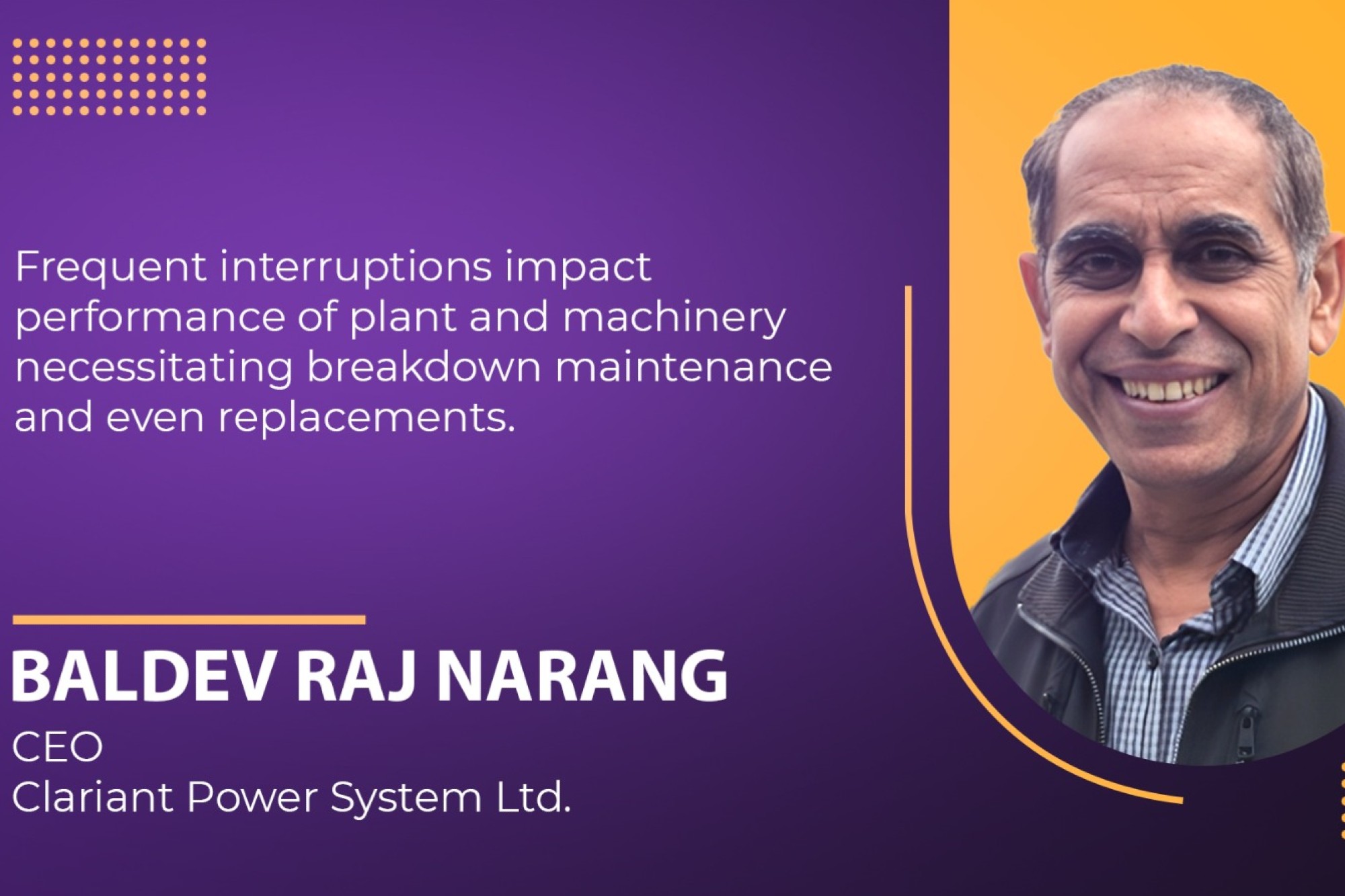Managing voltage dips in continuous process industries
By EPR Magazine Editorial November 28, 2024 11:53 am IST
By EPR Magazine Editorial November 28, 2024 11:53 am IST

Consumers with continuous process plants or even others with critical processes who can not afford power interruption need additional in-house dynamic reactive power support to restore the voltage within less than ten milliseconds.
Voltage dip is a critical occurrence that causes the tripping of electrical equipment, leading to interruptions in production and other plant processes. The extent of loss of production and other associated losses vary with the plant’s size and nature, and the damages caused could be enormous in continuous process plants. Restarting the plant and stabilising the production process is time-consuming, generating waste and substandard production until the production process is streamlined. The restoration is labour-intensive, and the operation personnel need the support of the maintenance team to bring the plant back to normalcy. Such frequent interruptions impact the performance of plant and machinery, necessitating breakdown maintenance and even replacements. Depending upon the plant’s nature, complexity and size, the losses caused by each voltage dip may run into a few lakhs or even a few crores of rupees.
Reasons for the occurrence of voltage dips
Voltage dips normally occur whenever a fault occurs in the grid or the local network. The dips are common, and the faults may be close to local distribution networks catering to a group of consumers or at a remote end feeding many consumer clusters, thus causing widespread isolation. The networks at the local level have many consumers connected to a common bus at a lower voltage, say 11 KV or 22 KV. When a fault occurs in any of the load feeders, all other loads experience the voltage dip connected to the same bus. Large consumers connected through an express feeder with a higher voltage, say 110KV/220KV, are comparatively safer but must be completely immune to the problem. The problem will become more acute with the large-scale integration of renewable power into the grid. Renewable power plants mainly come from remote locations. The grid inertia is weak here, and the SCR values are poor. Until the corrective measures like grid forming inverters and STATCOMS for overriding LVRT conditions are in place, the Renewable Plant’s integration with the grid will add to grid instability and increase occurrences of voltage dips. In 2022, there were twenty-eight instances of voltage dips and large-scale isolation of Renewable Power in Rajasthan alone.
Managing voltage dips in the grid
The power interruption due to voltage dips affects all consumers, but continuous process plants need special measures to save them from larger adverse impacts. Many such plants go for their own captive power generation and connect all their critical loads to the captive power run in island mode. Non-critical loads like utilities, etc, are catered through grid supply. However, more workable solutions exist for general consumers who depend on the grid alone. When the grid is strong, it can isolate the faulty section in less than one cycle through dynamic reactive power support from conventional generating stations, such as synchronous condensers or STATCOMS.
A comprehensive solution STATCOM to avoid power interruptionsConsumers with continuous process plants or others with critical processes who can not afford power interruption need additional in-house dynamic reactive power support to restore the voltage within less than ten milliseconds. This is an affordable solution, and more consumers are opting for it. The PSCAD modelling of the power system is done and integrated with the PSCAD model of STATCOM. The faults are simulated in the network at suspected locations, and the program is run to determine the MVAR capacity of STATCOM needed to overcome voltage dip conditions.
STATCOMS are available up to 33KV system voltage. These are an excellent solution for the voltage issues. Besides resolving voltage dip issues, the STATCOMS provide multiple additional benefits. During normal running, they correct the voltage in both directions. In the case of overvoltage, they provide dynamic inductive reactive power and bring down the voltage to a normal level. In the case of low voltage, they provide dynamic capacitive reactive power to boost the voltage to a normal level. This exercise effectively maintains the power factor close to unity and minimises the electricity billing, which works today on a KVAH basis. Another major advantage of STATCOMS is the mitigation of Harmonics directly at incoming voltage bus. Mitigation of Harmonics is needed to comply with IEEE519 norms enforced strictly by utility companies to avoid penal action.
Medium-voltage STATCOMS, available up to 33KV system Voltage, are an ideal and affordable solution to voltage dips that adversely affect consumers, particularly continuous process plants. Additional benefits available from STATCOMS are maintenance of a good voltage profile, optimisation of KVAH billing, and Harmonic Mitigation to comply with IEEE519 norms.
Authored by : Baldev Raj Narang, CEO- Clariant Power System Ltd
We use cookies to personalize your experience. By continuing to visit this website you agree to our Terms & Conditions, Privacy Policy and Cookie Policy.